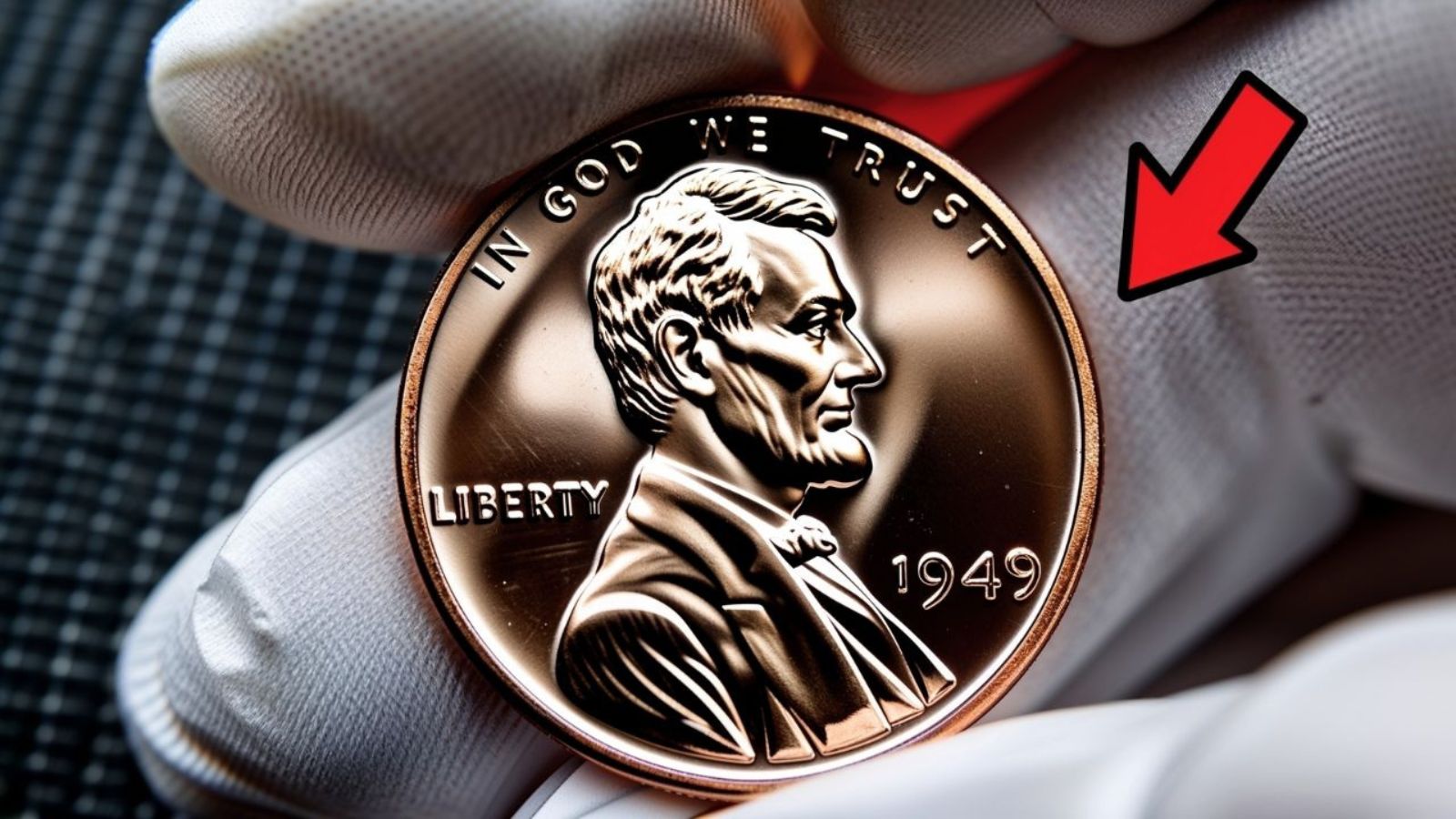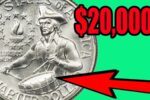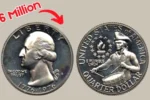Most people don’t give a second thought to the spare change rattling around in their pockets or sitting forgotten in a jar on a shelf. But among those seemingly insignificant coins, there could be a rare gem hiding in plain sight—a coin worth a small fortune. Specifically, we’re talking about the 1943 Lincoln Wheat Penny. While the average penny may only be worth a single cent, this particular coin—under the right conditions—has sold for as much as $4.4 million. It’s not a myth or an exaggeration. For coin collectors, history buffs, and treasure hunters alike, the Lincoln Wheat Penny from 1943 is the ultimate prize.
Lincoln Wheat Penny: A Brief Historical Overview
The Lincoln Wheat Penny made its debut in 1909 to commemorate the 100th anniversary of Abraham Lincoln’s birth. It was the first time a U.S. president had appeared on a circulating coin. Designed by Victor David Brenner, the coin features a right-facing profile of Lincoln on the obverse side, while the reverse displays two wheat stalks flanking the words “One Cent”—a symbol of agricultural prosperity and national strength.
From its inception through 1958, the Lincoln Wheat Penny remained a mainstay of American currency. But it’s the 1943 edition that has gained legendary status, not for its design, but for a curious wartime error that turned a few lucky coins into multimillion-dollar collectibles.
What Makes the 1943 Lincoln Wheat Penny So Valuable?
To understand the immense value of the 1943 Lincoln Wheat Penny, we need to look at the context of the times. In 1943, the United States was deep into World War II, and copper was in high demand for producing military equipment like shell casings and communications wiring. In a bid to conserve copper for the war effort, the U.S. Mint made the decision to switch the penny’s composition from 95% copper to a cheaper material—zinc-coated steel.
This change led to the minting of over a billion steel pennies in 1943, which had a distinct silver-gray appearance and were magnetic due to their iron content. However, an incredibly small number of pennies from that year were mistakenly struck on leftover copper planchets from 1942. These copper versions of the 1943 Lincoln Wheat Penny were never meant to exist, but a few slipped through the cracks. Today, it’s believed that only 15 to 20 authentic copper 1943 Lincoln Wheat Pennies are in existence.
That extraordinary rarity is what makes them so valuable. With so few known to collectors, each confirmed example becomes a precious relic of American history—and the bidding wars to own one can reach astronomical levels.
Telling Copper from Steel: How to Identify a Rare Lincoln Wheat Penny
So, how can you tell if that dusty old penny in your drawer is the rare copper variety rather than the common steel one? There are a few simple ways to tell the difference:
| Test | Copper Penny | Steel Penny |
|---|---|---|
| Magnetic | No | Yes |
| Color | Reddish-brown | Gray/silver |
| Weight | Slightly heavier | Slightly lighter |
| Surface | Softer, less shiny | Harder, more reflective |
The most effective first step is the magnet test. Steel pennies are magnetic, but copper is not. If your 1943 Lincoln Wheat Penny doesn’t stick to a magnet and shows that warm, brownish tone associated with copper, you might have something special in your hands. But don’t celebrate just yet—fakes and altered coins abound, and you’ll need to take a few more steps to be sure.
Suspect You Have a Rare Lincoln Wheat Penny? Here’s What to Do
If you’ve run the magnet test and you’re starting to wonder whether your penny could be one of the rare 1943 copper editions, it’s time to take it seriously. But don’t rush into selling it without confirming its authenticity. The market for rare coins is full of excitement, but also fraud and misinformation. Here’s what you need to do:
1. Get a Professional Appraisal
Before anything else, consult a professional coin grading service. Reputable institutions like the Professional Coin Grading Service (PCGS) or the Numismatic Guaranty Company (NGC) specialize in authenticating and grading rare coins. These organizations use scientific testing and expert analysis to determine if your coin is genuine, altered, or counterfeit.
2. Consult a Trusted Coin Dealer
Once your coin is authenticated, a certified coin dealer can help you assess its current market value. The American Numismatic Association maintains a list of reliable, vetted dealers who operate under a strict code of ethics. Avoid selling your Lincoln Wheat Penny through random online ads or unverified dealers, as this opens the door to potential scams.
3. Be Wary of Look-Alikes
Many collectors get excited about 1943 pennies only to discover that their coin is either a steel penny with a copper-colored coating or a misread 1945 or 1948 coin. Worn-out digits and intentional alterations are common. Always verify the date, composition, and overall integrity of the coin before making any assumptions.
Selling a Rare Lincoln Wheat Penny: How to Maximize Value
If your Lincoln Wheat Penny turns out to be the real deal—a genuine 1943 copper mint—you’re in for a life-changing opportunity. The next step is to decide how and where to sell it. Your best options typically include:
-
Major Auction Houses: Platforms like GreatCollections, Heritage Auctions, and Stack’s Bowers regularly handle rare coin sales. These houses cater to serious collectors with deep pockets and offer full transparency through public records of past sales.
-
Certified Dealers: If auctions aren’t your style, a high-profile certified coin dealer can help you broker a private sale with another collector or investor.
-
Coin Shows and Conventions: National and international numismatic events offer another potential venue for showcasing and selling rare coins directly to interested buyers.
No matter which route you choose, never sell hastily. Take time to understand the value of what you have and ensure you’re dealing with professionals every step of the way.
Are There More Lincoln Wheat Pennies Still Out There?
You might be surprised to learn that yes—there could still be more rare 1943 copper Lincoln Wheat Pennies hidden away. Some may have been passed down in family heirlooms, slipped into coin jars, or buried in forgotten collections. The rarity doesn’t necessarily mean all known examples have already surfaced. That’s why so many collectors continue to comb through old coins, hopeful they’ll be the lucky ones to discover the next million-dollar penny.
And it’s not just the 1943 copper penny that’s valuable. Several other variations of the Lincoln Wheat Penny are considered rare and collectible, especially those with minting errors or unusual compositions. But the 1943 copper edition remains the holy grail—an unexpected mistake that turned out to be a golden opportunity for a few lucky individuals.
Summary Table: Lincoln Wheat Penny Showdown
| Feature | Copper 1943 Penny (Rare) | Steel 1943 Penny (Common) |
|---|---|---|
| Metal Composition | 95% Copper | Zinc-coated Steel |
| Estimated Value | Up to $4.4 Million | $0.01 – $1 |
| Magnet Test | Non-magnetic | Magnetic |
| Known Specimens | 15–20 | Over 1 Billion |
| Collector Demand | Extremely High | Low |
| Color & Appearance | Reddish-brown, matte finish | Shiny gray, metallic |
There’s something undeniably thrilling about the idea that a small, seemingly unimportant coin could be hiding immense value. The Lincoln Wheat Penny is a tangible piece of American history, a connection to the past, and a symbol of how something simple can become extraordinary.
The legacy of the Lincoln Wheat Penny continues to grow with each passing year. As more collectors enter the scene and more people become aware of these hidden treasures, the demand only intensifies. Even if you never find one yourself, just knowing they exist keeps the dream alive—and makes every coin worth a second glance.
FAQs
How can I tell if my 1943 penny is a rare Lincoln Wheat Penny?
Use a magnet. Steel versions are magnetic; copper ones are not. If your penny doesn’t stick and appears reddish-brown, you may have a copper coin worth investigating.
Are all 1943 Lincoln Wheat Pennies valuable?
No. The vast majority are steel and worth only face value or a small premium. It’s only the copper versions that are extremely rare and valuable.
Where can I get my Lincoln Wheat Penny evaluated?
Use reputable services like PCGS or NGC, or visit a certified dealer listed on the American Numismatic Association’s website.
Can I sell a rare Lincoln Wheat Penny online?
Yes, but only through trusted platforms like GreatCollections or Heritage Auctions. Avoid unverified buyers and quick-sale websites.
Is there a chance more rare 1943 Lincoln Wheat Pennies are still in circulation?
It’s possible. Some may remain hidden in private collections, old drawers, or coin jars. That’s why enthusiasts continue to search.
With history, rarity, and intrigue wrapped into one small coin, the Lincoln Wheat Penny remains one of the most fascinating collectibles in numismatic history. Whether you’re a seasoned collector or a curious novice, the thrill of possibly owning a multimillion-dollar penny is enough to keep your eyes peeled for that unmistakable reddish glint.
Some Important Link
| Telegram Group | Click Here |
| WhatsApp Group | Click Here |
| Home Page | Click Here |













